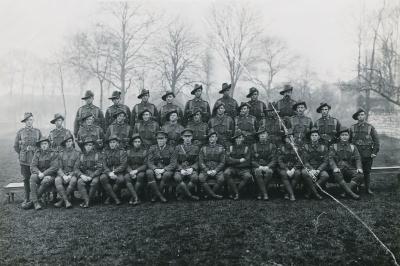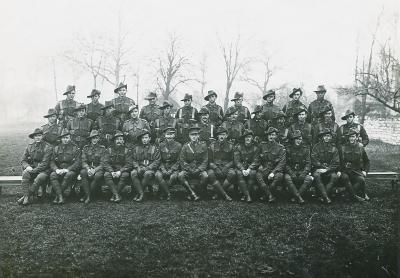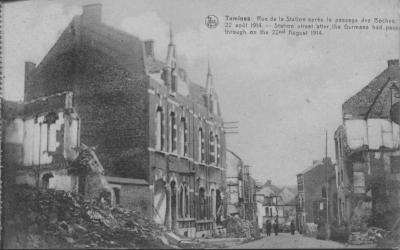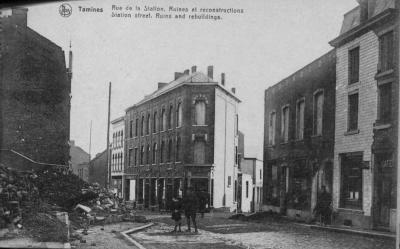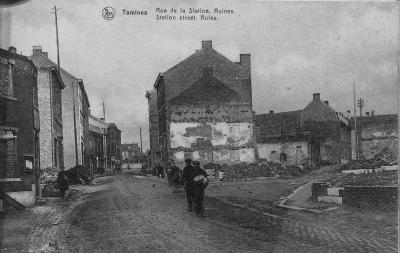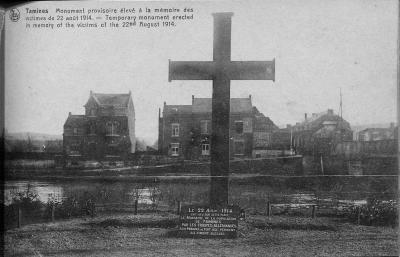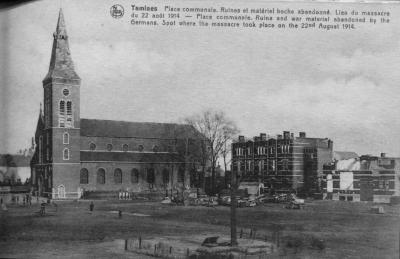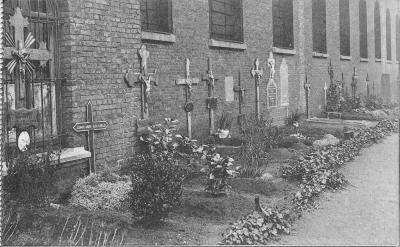World War 1, Europe, 11 Battalion, 1918
1918Group of officers and men
The 11th Battalion was the first unit recruited in Western Australia for the Australian Imperial Force. Alongside the 9th, 10th, and 12th Battalions, it formed the 3rd Brigade. After only two weeks of initial training, the battalion departed Fremantle on 1 November 1914, arriving in Egypt for further training in early December. The 3rd Brigade led the ANZAC landing on 25 April 1915, being the first ashore around 4:30 am. Ten days post-landing, a company from the 11th Battalion conducted the AIF's first raid on Turkish positions at Gaba Tepe. Throughout the campaign, the battalion was heavily engaged in defending the ANZAC beachhead and participated in preparatory attacks for the battle of Lone Pine in August. They remained active at ANZAC until the evacuation in December.
Post-Gallipoli, the 11th Battalion returned to Egypt, where it was split to help form the 51st Battalion and replenished with reinforcements. In March 1916, the battalion sailed to France, joining the Western Front's trench warfare until 1918. Their first major battle in France was at Pozieres in July. Following this, they held trenches near Ypres and later returned to the Somme for winter.
In 1917, they participated in the advance following the German retreat to the Hindenburg Line. In April, during a German counterattack at Louverval, Lieutenant Charles Pope was killed performing actions that earned him a posthumous Victoria Cross. The battalion later fought in the Third Battle of Ypres.
In March and April 1918, the battalion helped stop the German spring offensive and joined the Allied offensive east of Amiens on 8 August, achieving a significant victory described by German General Erich Ludendorff as "the black day of the German Army." The 11th Battalion continued operations until late September 1918. The armistice on 11 November 1918 ended the fighting, followed by the Versailles peace treaty on 28 June 1919.
Details
Details
Australian Army Museum of Western Australia
Australian Army Museum of Western Australia
Other items from Australian Army Museum of Western Australia
- World War 1, Europe, 11 Battalion, 1918
- World War 1, Europe, 11 Battalion, 1918
- World War 1, Europe Belgium Châtelineau, 11 Battalion, 1918
- World War 1, Europe, 11 Battalion, 1918
- World War 1, Europe Belgium Tamines, 1914
- World War 1, Europe Belgium Tamines, 1914
- World War 1, Europe Belgium Tamines, 1914
- World War 1, Europe Belgium Tamines, 1914
- World War 1, Europe Belgium Tamines, 1914
- World War 1, Europe Belgium Tamines, 1914
- World War 1, Europe Belgium Tamines, 1914
- World War 1, Europe Belgium Tamines, 1914
